July 29-31, 2018
Valdez is on Prince William Sound a the southern end of the Richardson Highway. Getting there was a beautiful drive.
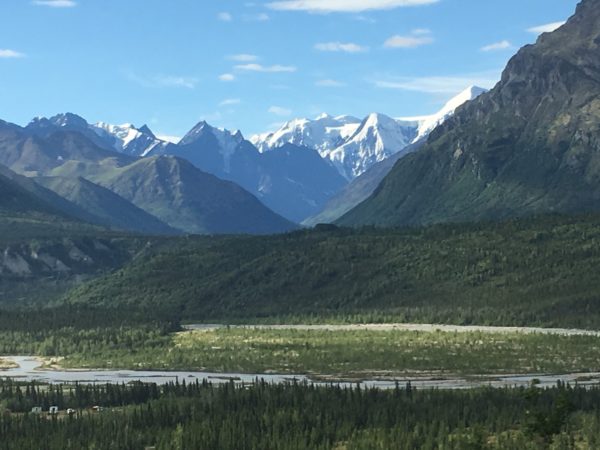
At about 5,000 feet, the Chugach Mountains are the tallest coastal mountains in North America.
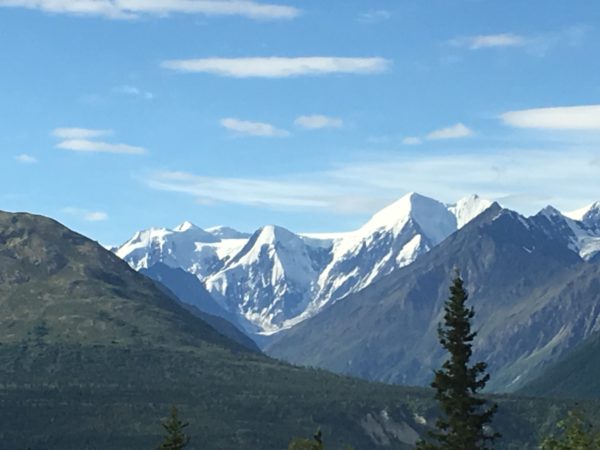
The Chugach are also the most heavily glaciated mountains in the northwest.
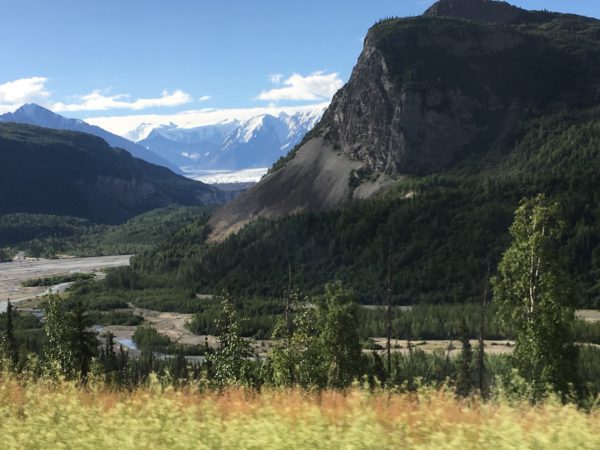
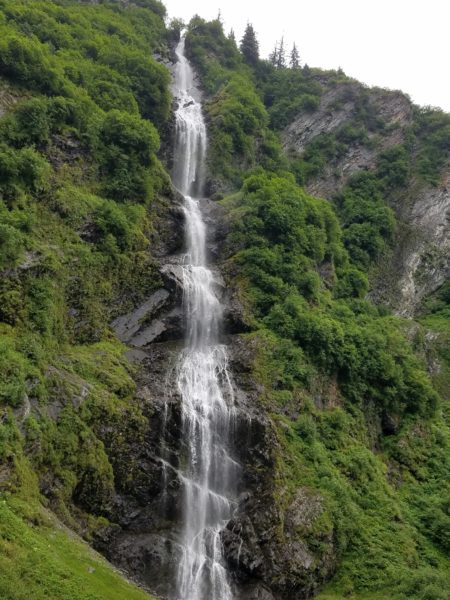
Bridal Veil Falls
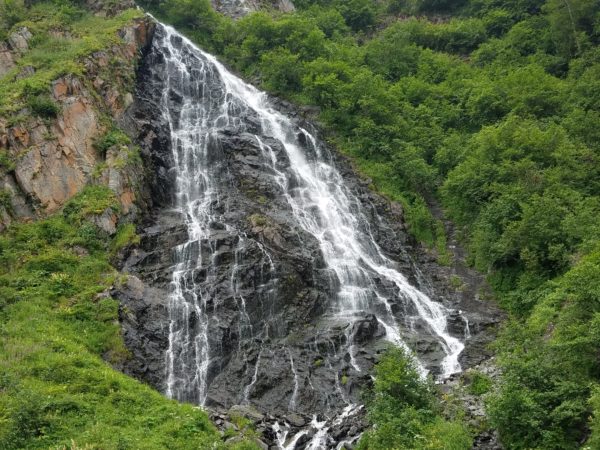
Horsetail Falls
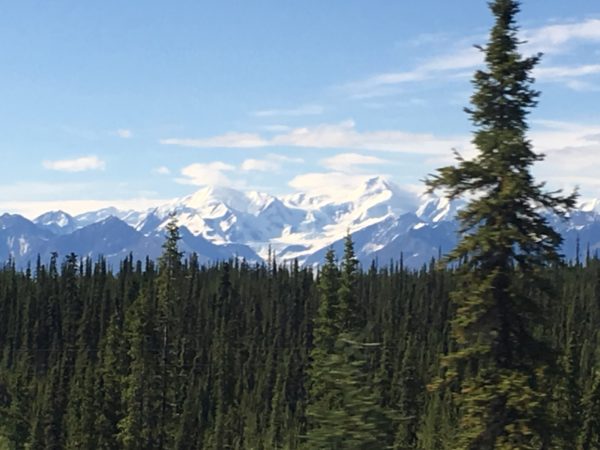
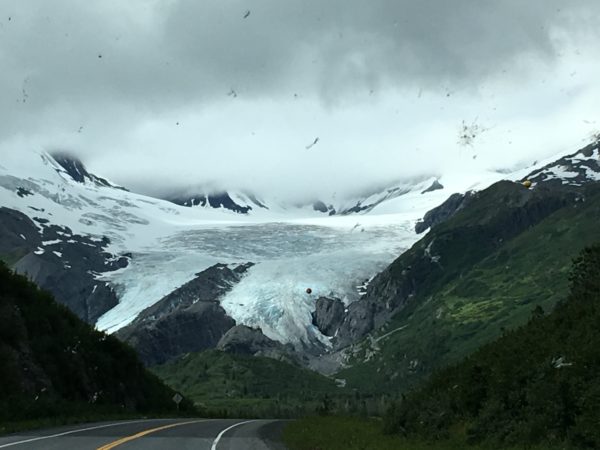
Worthington Glacier
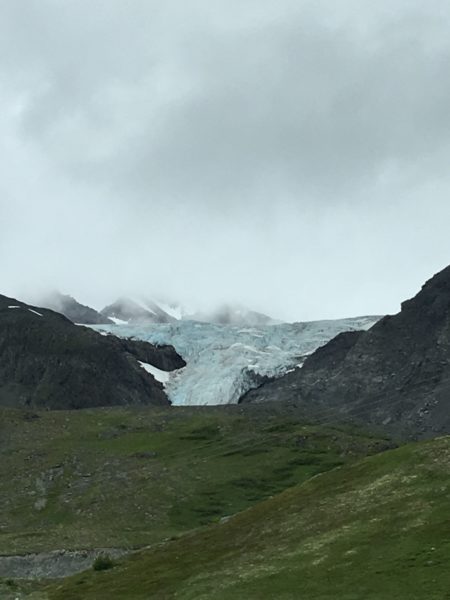
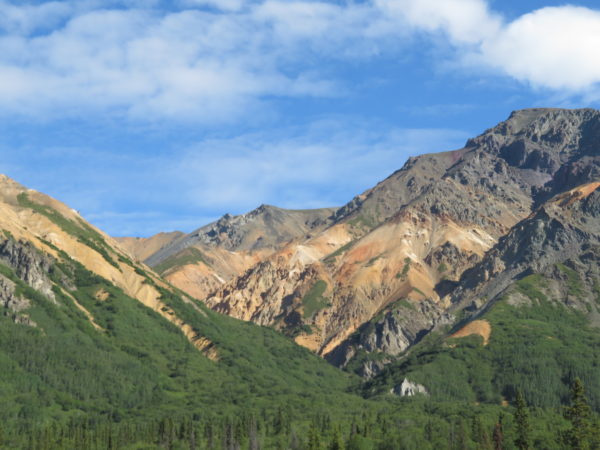
The colors in the mountains are an iron-stained rock known as Sheep Mountain Gypsum.
Valdez (think val-DEEZ) is the most northerly ice-free port in the western hemisphere. A whaling company promoted a route to the Klondike goldfields terminating in Valdez as a way to fill its ships returning from Seattle. Prospectors liked this “All-American Route” because they didn’t have to venture into Canada. Many of them didn’t know that they did have to cross the treacherous Valdez Glacier, at least until 1899 when the U.S. Army cut a trail through Keystone Canyon.
When the town was organized in 1898, it had three frame houses, a large number of tents, some stores, and a saloon. Stampeders stayed about a week, gathering supplies.
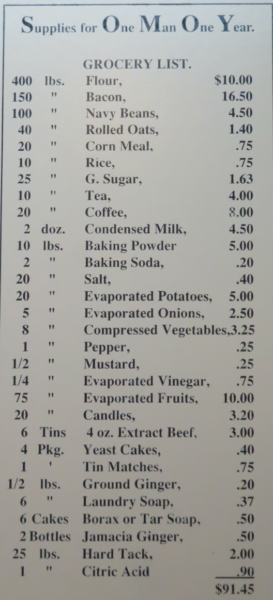
Part of a supply list for a stampeder
The town remains a transportation hub and a tourist destination. It was named for a Spanish naval officer in 1790.
Our campground was right on the water where small boats exited the harbor and larger boats were loaded with cargo.
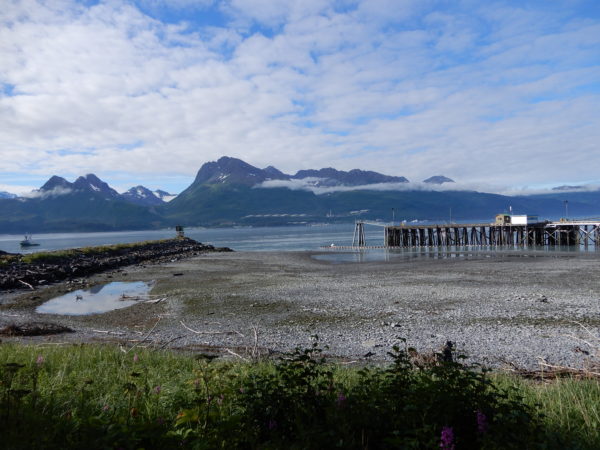
Low tide
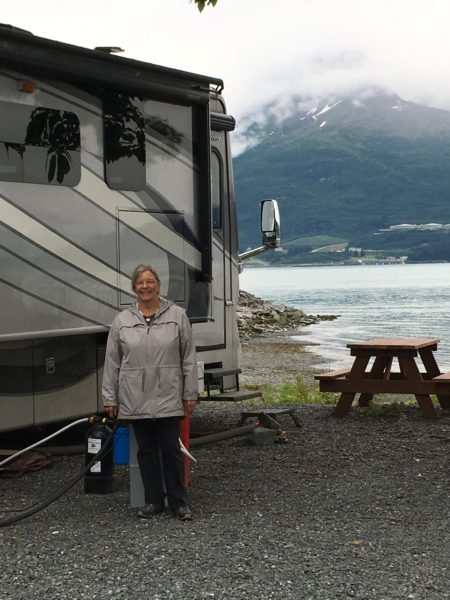
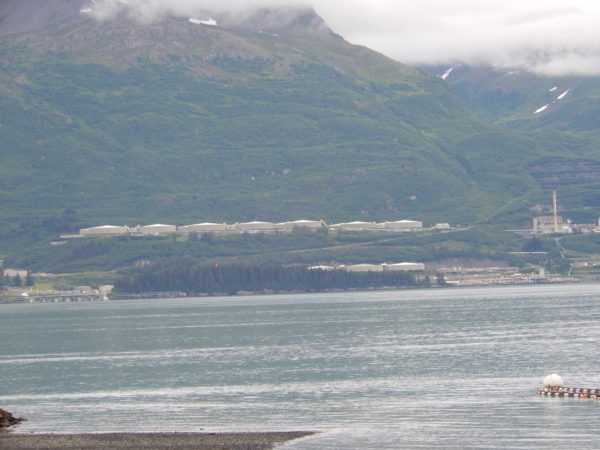
Oil storage tanks for the Trans-Alaska Pipeline across the water
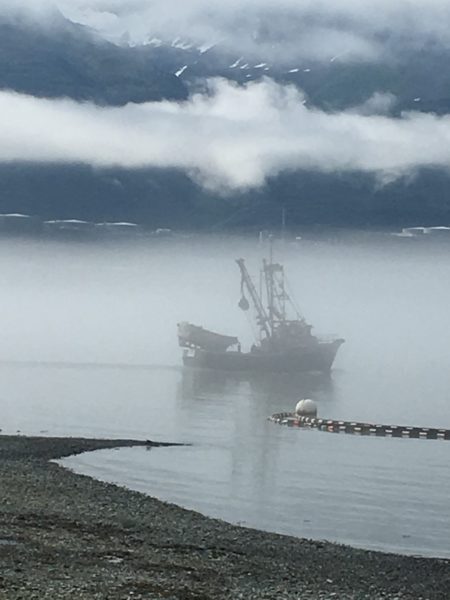
A fishing boat heads out on a misty morning
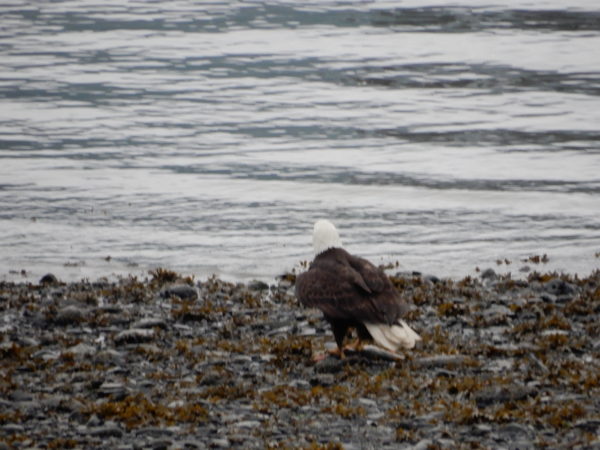
A bald eagle looks for supper.
After we had gotten settled, Dave was chatting with our neighbors and discovered they were dulcimer players. Jane and Shirley played together several times.
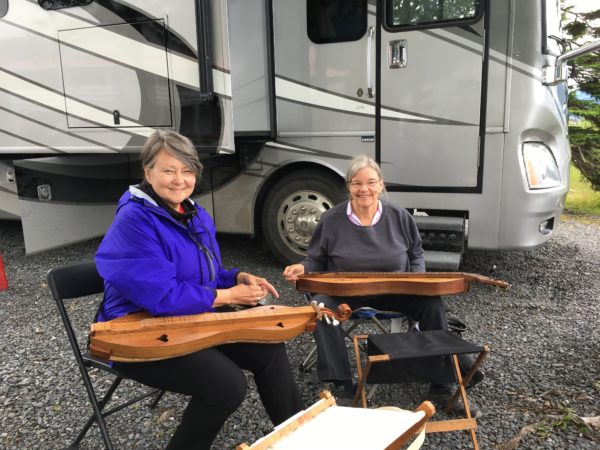
Dock Point Park
We enjoyed a morning walk along a trail at Dock Point Park adjacent to the small boat harbor.
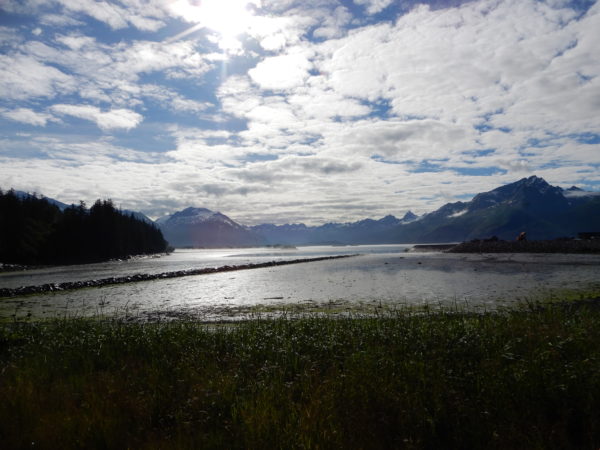
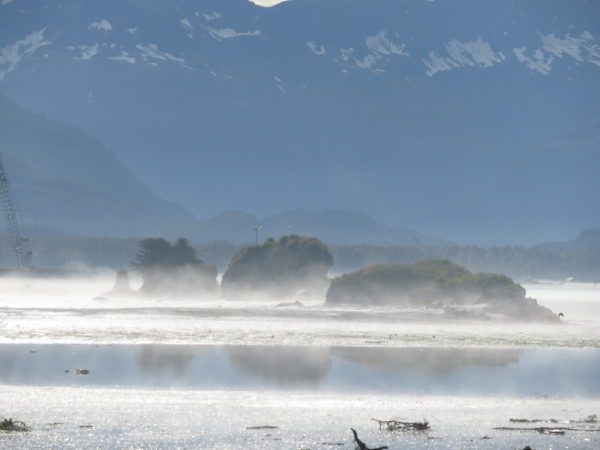
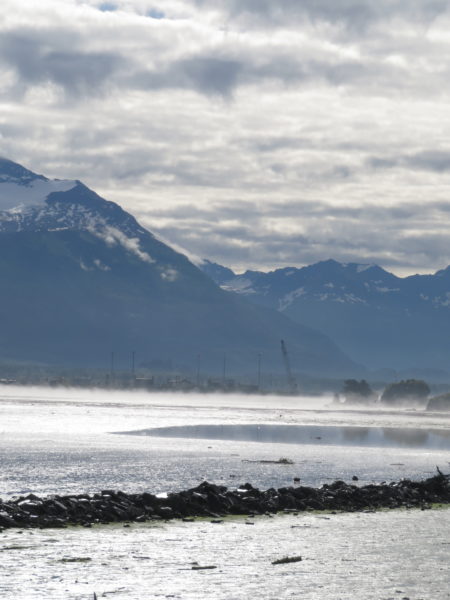
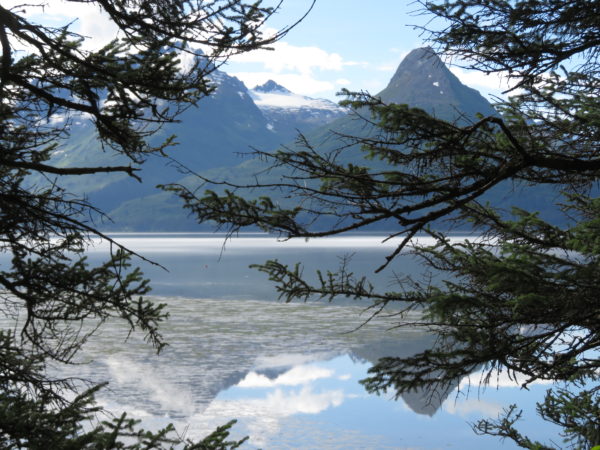
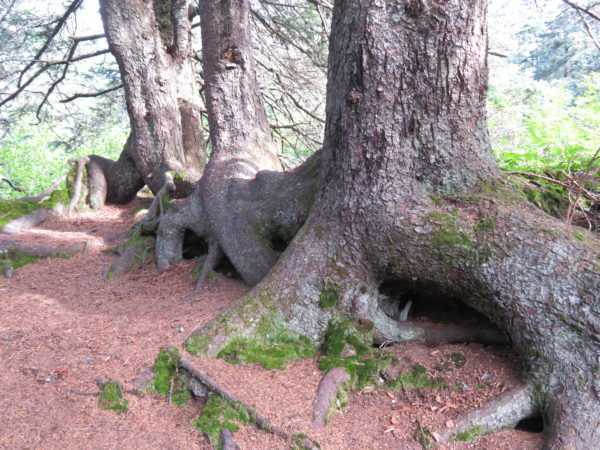
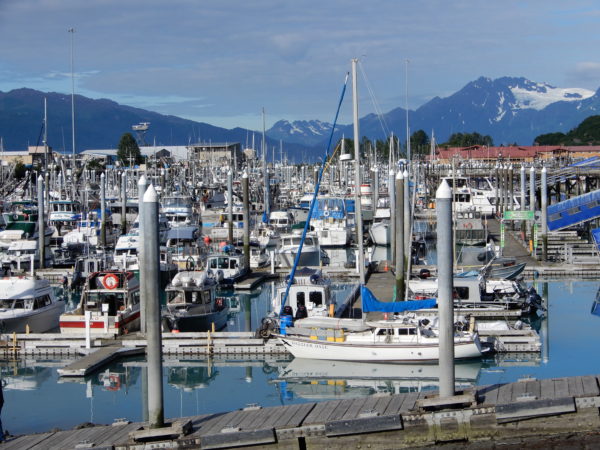
Overlook Trail
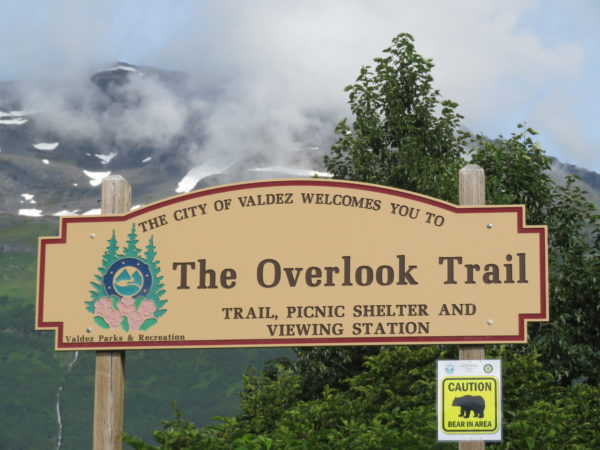
No, we didn’t see the bear.
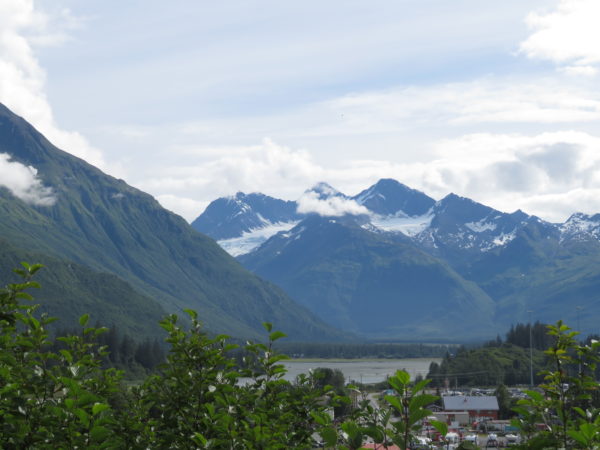

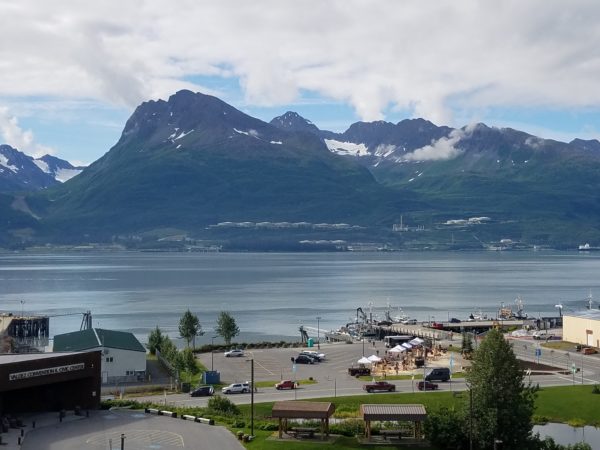
This area was about two blocks from our campground and hosted a chainsaw carving competition while we were there.
Trans-Alaska Pipeline System
The pipeline starts on the Arctic Ocean in Prudhoe Bay and ends 800 miles later in Valdez. The 1000-acre Valdez Marine Terminal has storage tanks for crude oil and also loads oil directly onto tankers for transport.
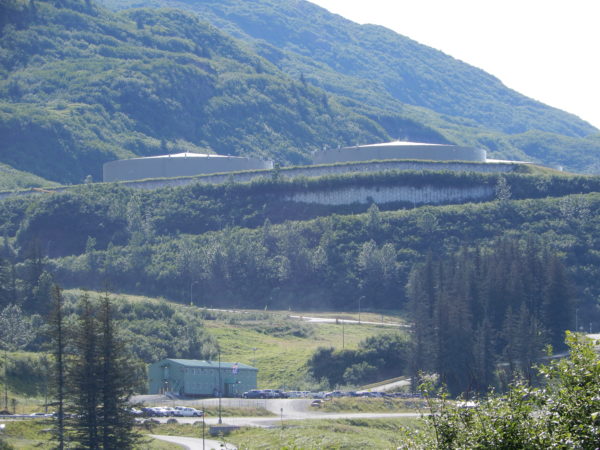
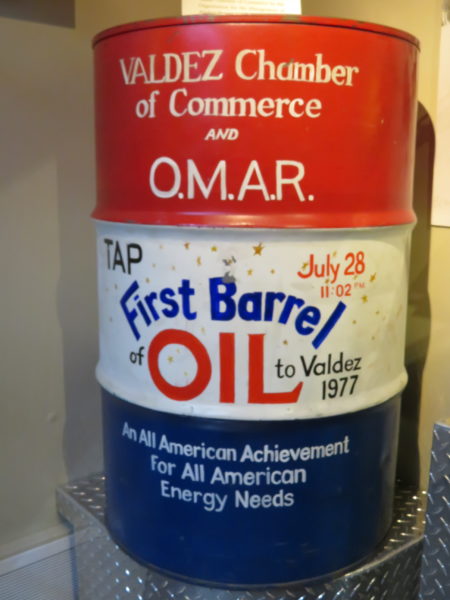
The Valdez Museum has the first barrel of oil pumped through the pipeline system on July 28, 1977.
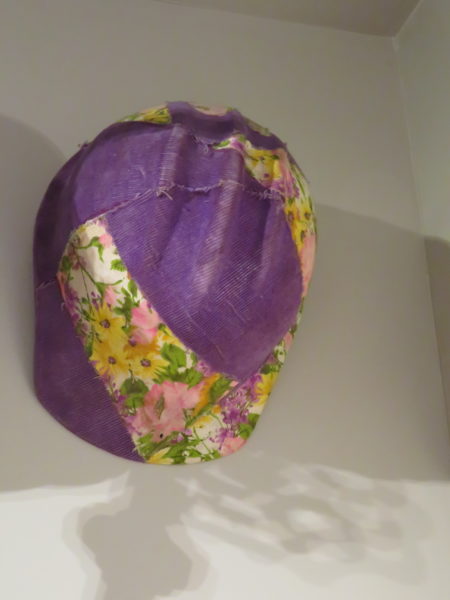
Workers on the pipelines decorated their hard hats.

The Whitney Museum
Jesse and Maxine Whitney came to Alaska in 1947. Maxine traveled to native villages and bought objects from artists for a gift shop she owned. Her collection, including wildlife mounts, dolls, ivory, and minerals, is now accessible to the public in the Whitney Museum adjacent to the Prince William Sound Community College. Museum exhibits pointed out that many items that were collected were made for the tourist trade rather than as art objects.
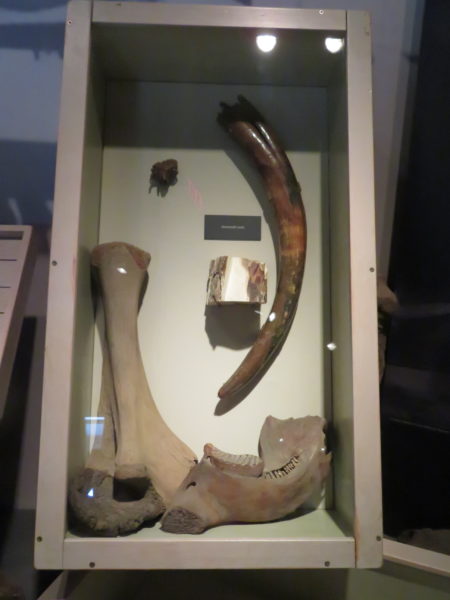
Mammoth artifacts
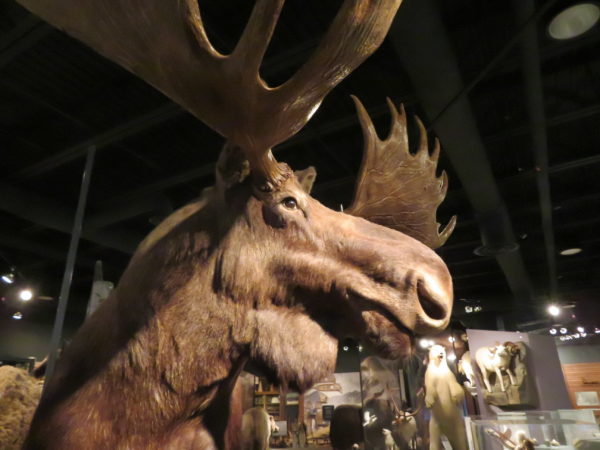
Moose
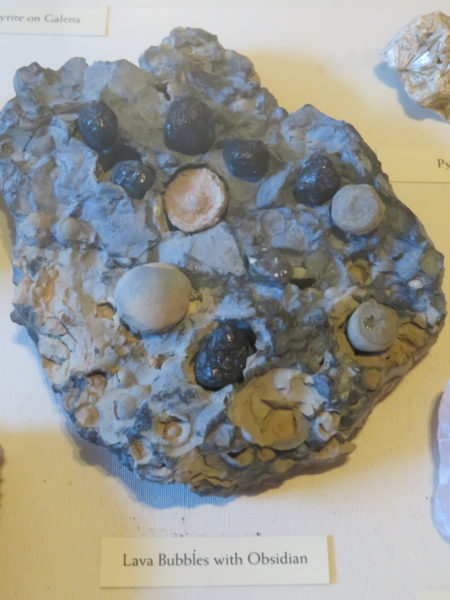
Lava bubbles with obsidian
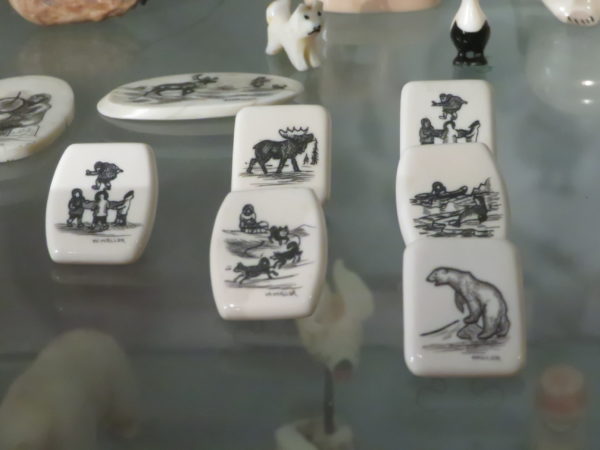
Ivory buttons
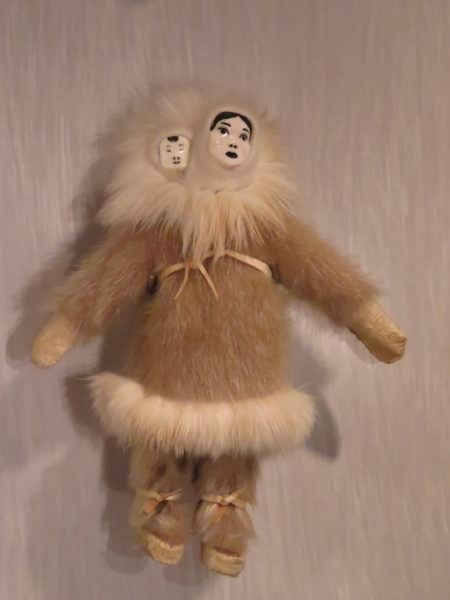
Mother and child doll
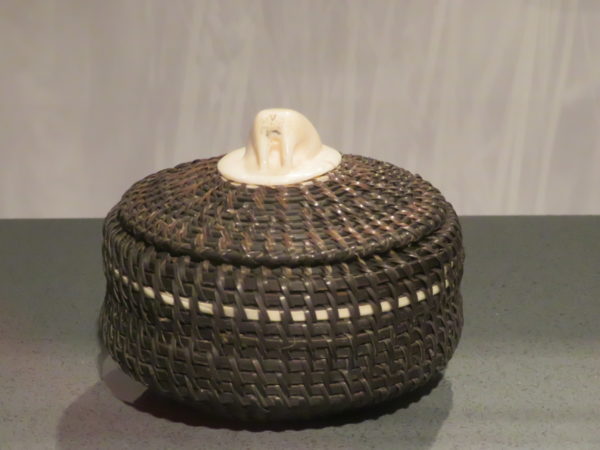
Basket
Valdez Museum
We enjoyed several exhibits at the Valdez Museum.
A Victorian parlor has been furnished to show what life was like in the decade following the gold rush. Guests were entertained in the parlor, and it was filled with objects that reflected the owners’ interests and aspirations. Residents wanted to show that Valdez was “the coming metropolis of Alaska”.
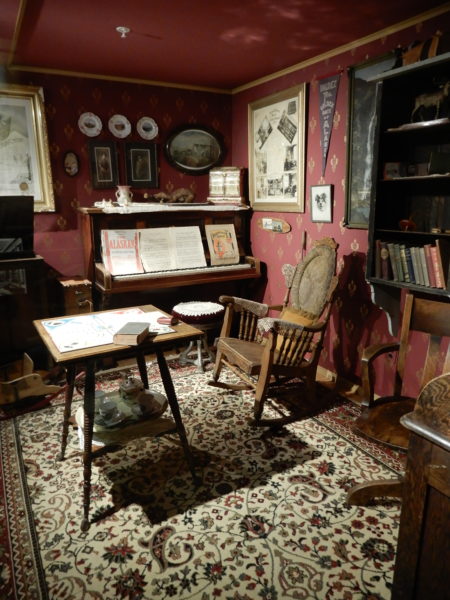
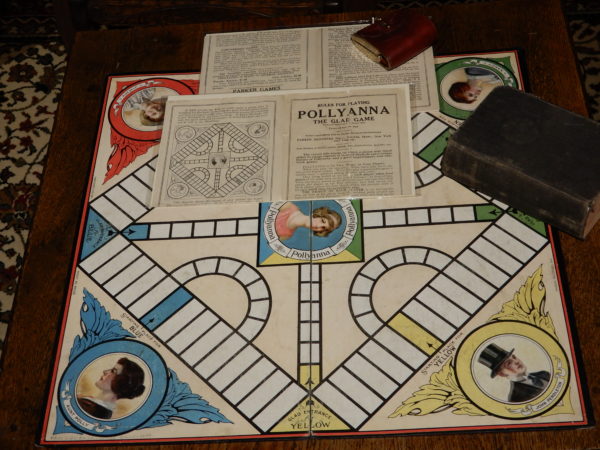
Another exhibit features the bar from the Pinzon, a social hub of Valdez until it closed following the 1968 earthquake.
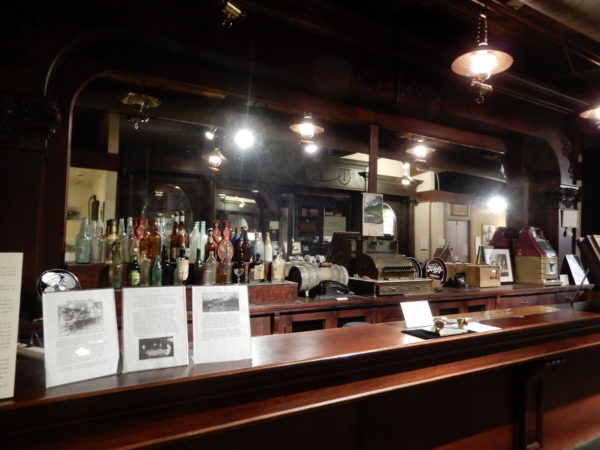
The bar was 40 feet long (it’s displayed in two sections in the museum) and its decorative back pieces were manufactured in Chicago and shipped around the tip of South America.
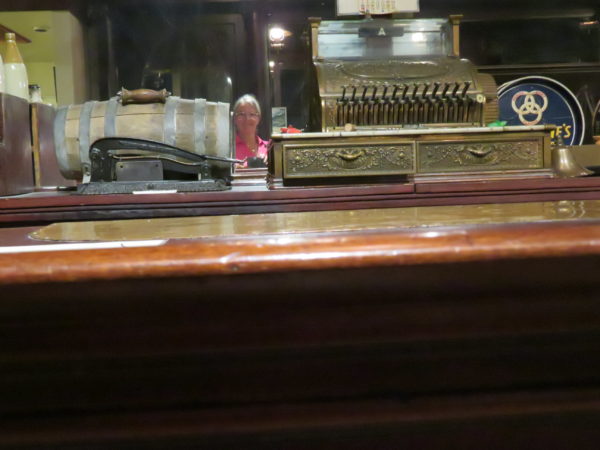
The brass plate covers holes that were made to hold soda fountains during prohibition.
A corner of the museum held display cases with ore-bearing rocks.
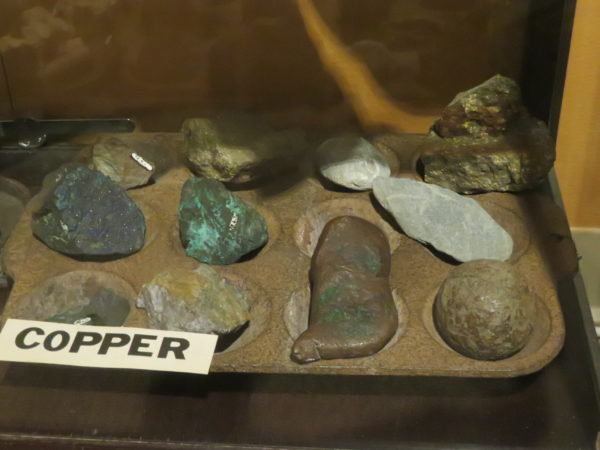
Copper ore
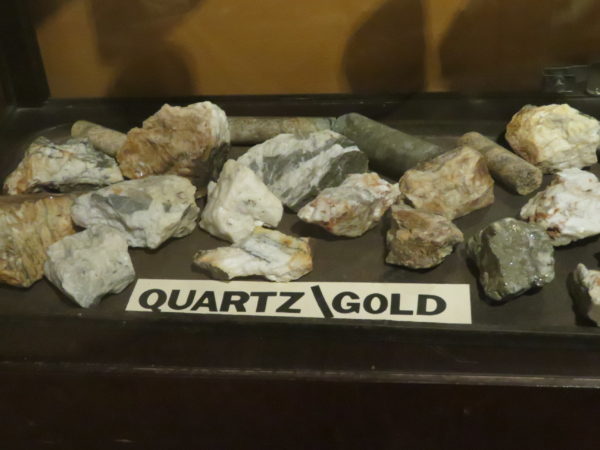
Quartz with gold
On March 24, 1989, the oil tanker Exxon Valdez collided with a reef in Prince William Sound and spilled almost 11 million gallons of crude oil along 1,300 miles of coastline and over 11,000 square miles of ocean. The remote location made clean-up extremely difficult. 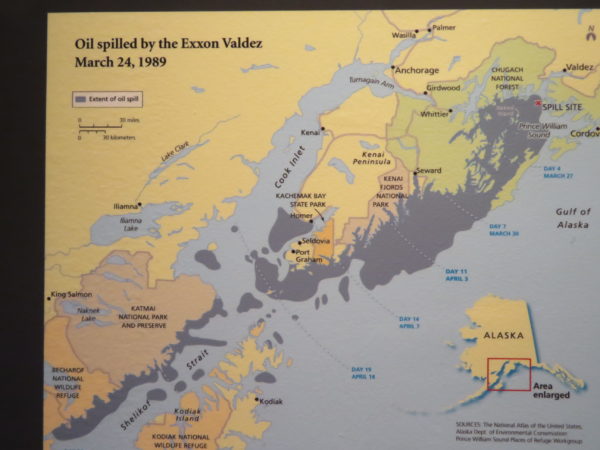
Casualties of the spill included 250,000-500,000 seabirds, 2,800-4,000 sea otters, 300 harbor seals, 250 bald eagles, and up to 22 killer whales.
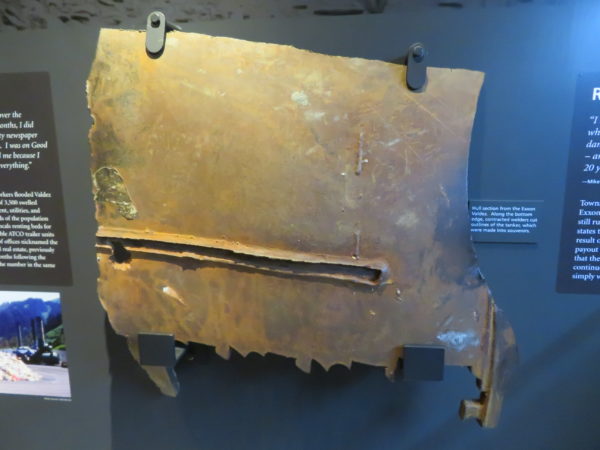
The bottom edge of this hull section was cut to resemble the outline of the tanker as a souvenir.
We had seen exhibits on the Good Friday Earthquake in Fairbanks, Anchorage, and Seward. Here’s a description of what happened in Valdez:
When the Good Friday earthquake struck, the entire city began heaving violently and huge fissures formed in the earth spewing mud, water, and sewage 20 feet into the air. Twenty-eight people were on the dock, watching and unloading the SS Chena, a 400-foot Liberty ship. As the quake reached full force, it triggered a submarine landslide under the harbor, which generated a 40-foot wave that instantly destroyed the harbor, the docks, the canneries, and all the people on the dock. The Chena bottomed out three times, rolling and pitching so violently that three seamen were killed. When the huge wave retreated, it threw the Chena out to sea.
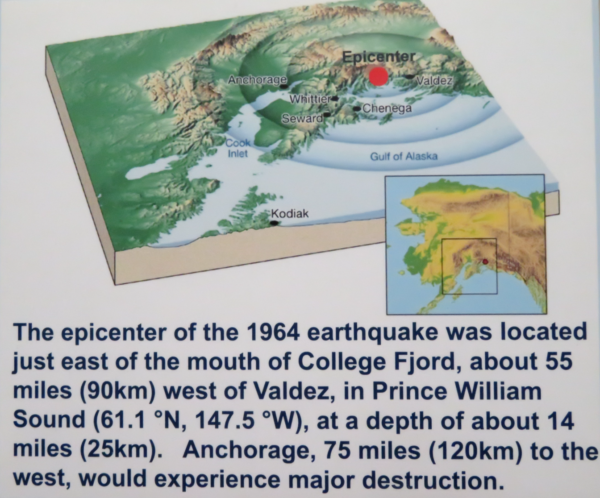
The U.S. Army Corps of Engineers decided the ground on which Valdez had been built was unstable. By 1968 the town had been relocated four miles away. 68 businesses were relocated to the new site, and old structures were burned during training sessions. We visited the old site–there were some plaques in front of empty fields. The museum, however, has a 1:20 scale replica of the city’s 60 blocks and 400 buildings so Old Valdez continues to be discoverable.
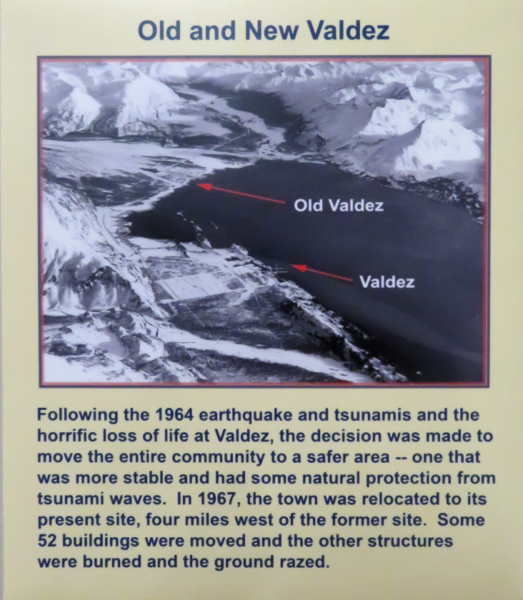
One Valdez resident had accidentally left her credit card at the gas station. When the earthquake began, she abandoned her decision to retrieve it. The card and the machine it was in were recovered 40 years later at the former site.
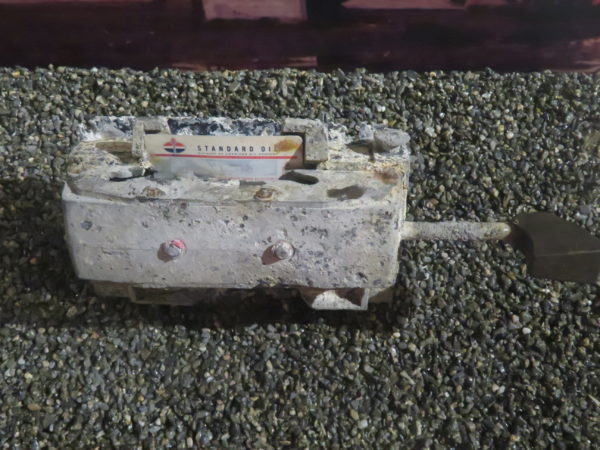
Solomon Gulch Fish Hatchery
Here are views of one of the glaciers we saw on the 10-mile drive to the Solomon Gulch Fish Hatchery
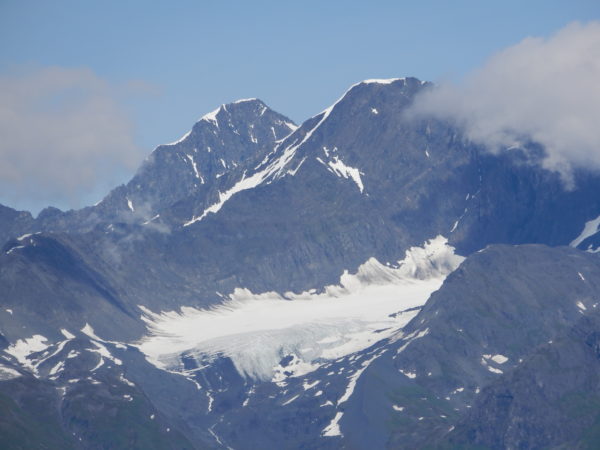
and Solomon Gulch Falls across from the hatchery.
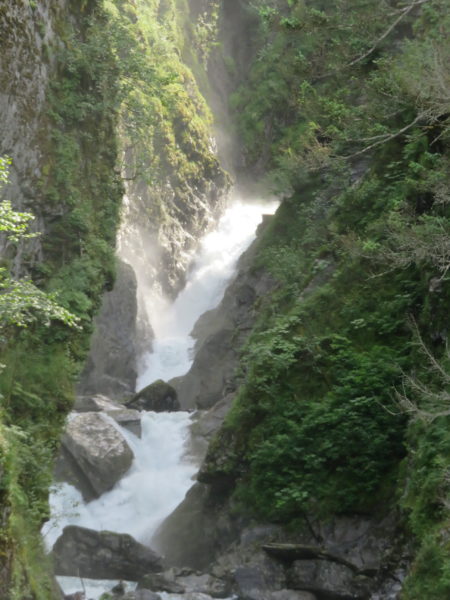
The fish hatchery is a private, not-for-profit organization designed to enhance the commercial and sports fisheries of Prince William Sound. Pink and coho salmon are raised at the hatchery. Thousands of salmon were seeking access to the hatchery when we were there. Gulls, sea lions, and bears (though we didn’t see any bears while we were there) follow the salmon.

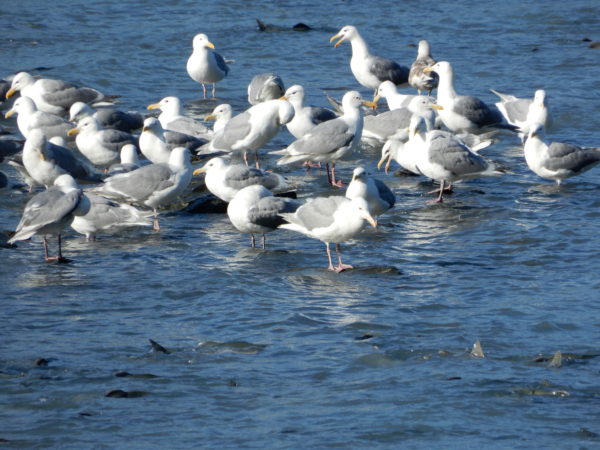
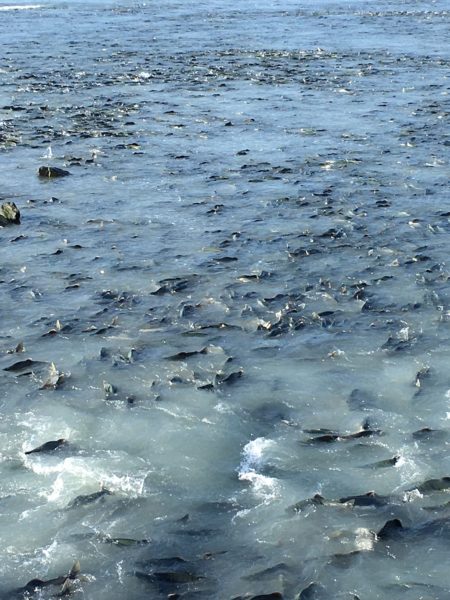
20,000 fish swim up the ladder each day. For this season, the hatchery’s goals are 230 million eggs from 135,000 females, fertilized by 45,000 males. The salmon remains are sold to a dog treat manufacturer.
Alaska Cup Chainsaw Competition
Just a couple of blocks from our RV park (yes, it did sound like we were living near the world’s loudest bees, but only until 6 pm) eight chainsaw sculptors from around the world competed for the Alaska Cup. Each sculptor carved a showpiece over the four days of competition and a speed-carving piece each day.
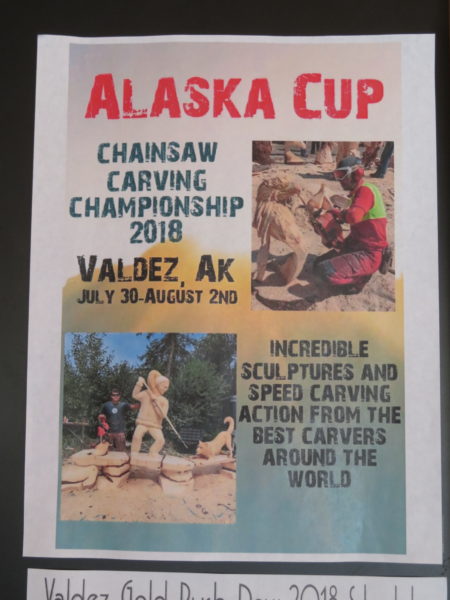
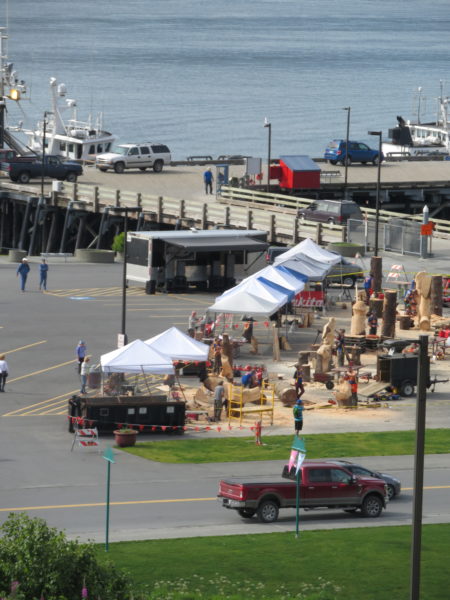
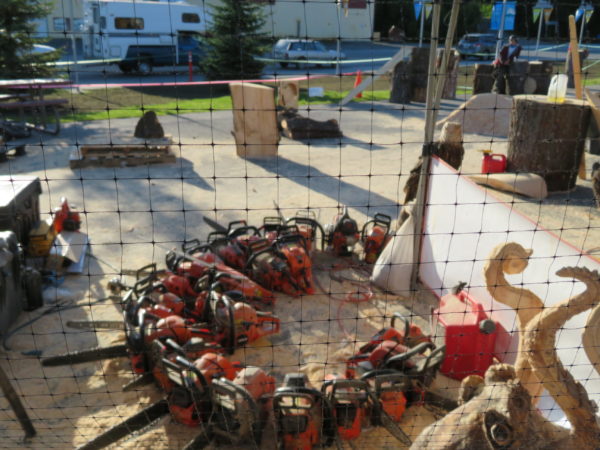
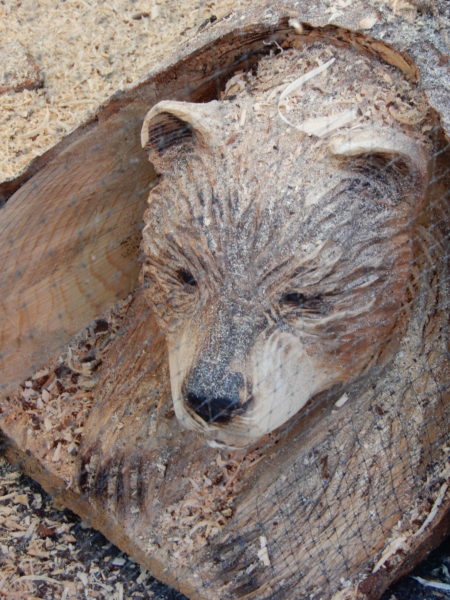
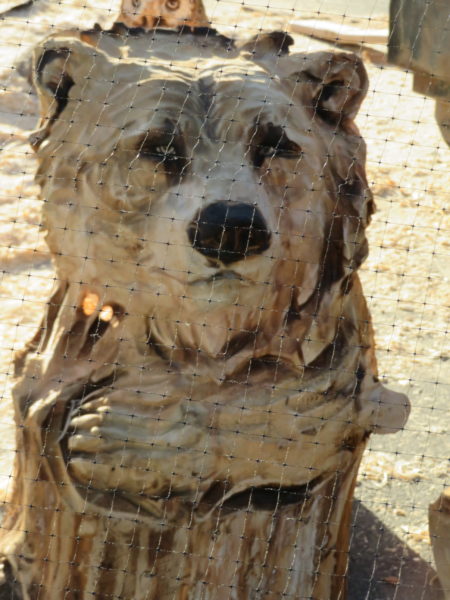
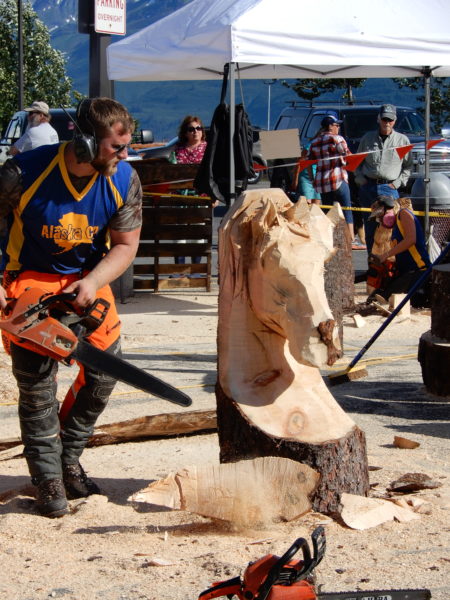
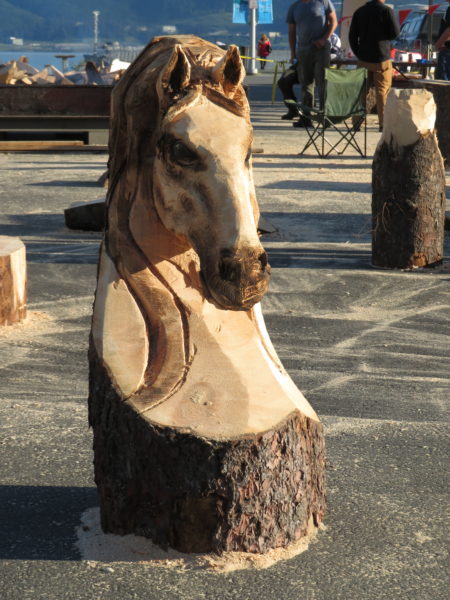
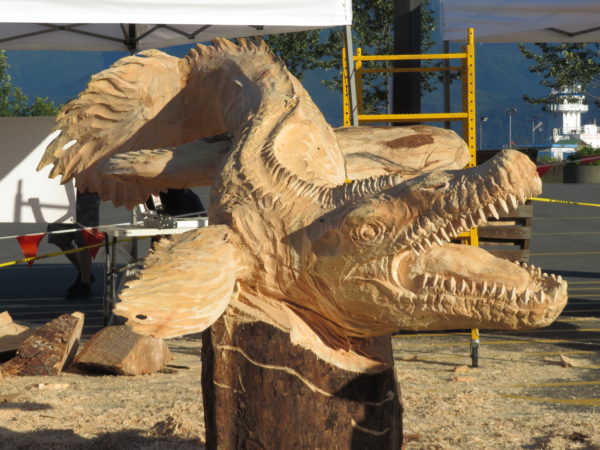
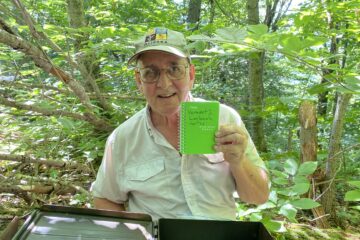
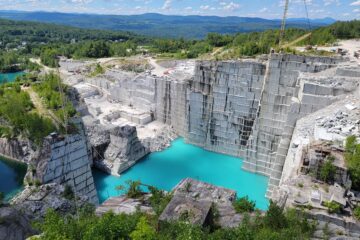
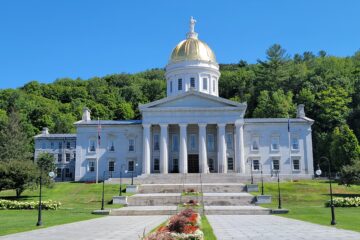
4 Comments
Laura · October 12, 2018 at 2:19 pm
Oh my! I’m living so vicariously through your travels! Again, thanks for sharing. When do you head to AZ?
Jane Appel · October 12, 2018 at 5:14 pm
We expect to be in Casa Grande, AZ December 1. We’re further than the blog shows, of course, since this post was for a stop in August. Thanks for your comments!
Jackson McAfee · October 12, 2018 at 3:30 pm
I’m sure you are watching the weather. They have already had snow near my home in Northern Minnesota. It must be about time for you to follow the snowbirds. I communicated with Maddie MacNeil this week. That was fun.
I love every post on your Path of Discovery.
Esther
Jane Appel · October 12, 2018 at 5:17 pm
What a storm! We ARE headed south–and are quite ahead of the blog in that respect. It hasn’t been shorts weather for us, ironically, since Fairbanks–our northernmost stop. We appreciate your comments.